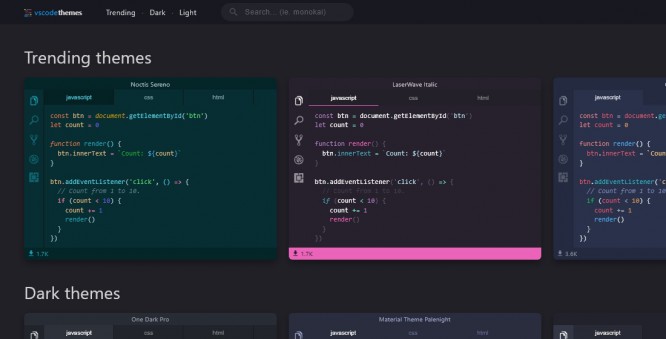Leading experts advise books on art, design, and interfaces. They also talk about why it is important for a designer to know how to interview users and write good texts.

Konstantin Zamurenko
lead designer Skyeng
Book lists about typography, design process, and editing are easy to google. There is one and the same applied literature: from Bringhurst to Ilyakhov. All of this is great, but it would be nice for communication professionals to understand the main medium of communication – culture.
“A work of art in the era of its technical reproducibility” by Walter Benjamin. A short essay, without which it is impossible to understand how contemporary and contemporary art works.
The Thousand Faced Hero by Joseph Campbell. Even in the era of science and universal compulsory education, we continue to perceive culture through the structure of myth. Whether it’s a secularized Christian myth or a modern one that we absorb from cinema and advertising.
“Meta-Luxury: Brands and the Culture of Excellence” by Manfreddy Ricca and Rebecca Robins. Smart research on the nature of the luxury segment industry from the point of view of cultural studies and marketing. It is especially interesting because since 2014 the culture change is most noticeable in this segment.
“Design in the culture of the 20th century” by Vladimir Aronov. The most important thing for the Russian-speaking reader in the third chapter is almost the only material about the Ulm School in Russian. When people talk about the formation of design as a discipline, the Bauhaus is often mentioned. Although the design, as we know it today, took shape in Ulm.

Ilya Grishin
senior designer “VKontakte”
The simplest but very useful set comes to mind.
“Write, cut. How to create a strong text ”by Maxim Ilyakhov and Lyudmila Sarycheva. Probably all and sundry have read it. I often see people on the subway reading this book. Of course, this is far from being a guide. After reading it, you will not learn how to write good texts. But you can learn from there a number of good tricks. It is important for a designer to write texts himself. In this case, editors within the team will not help. And only you can correctly write the error text and describe the state of the blank screen.
“Introduction to TRIZ” – the theory of inventive problem solving. It was developed by the Soviet inventor Heinrich Altshuller. Let’s call TRIZ a certain methodology that allows us to optimize the creative process: from an endless enumeration of options to come to a more correct organization and time-efficient obtaining of the desired result. This is not the first time I hear about the book from colleagues. They say that if you succeed in making good friends with TRIZ, then it will be possible to use it not only in design. Himself while in the process. Let’s see what happens.
“Corporation of Geniuses. How to manage a team of creative people ”by Ed Catmall. Probably the most motivating book I have read. A lot about the atmosphere, about the processes of transformation of a company from a small to a large one, about mistakes and useful innovations. A lot about interaction with creative people.

Sergey Kondaurov
Head of Service Design Services, Yandex Search Portal
It is not possible to select multiple design books. How do you compare literature for novice and experienced designers, books on research with books on product methodologies? I identified three topics that, according to my observations, are most often problematic for modern service designers, and offered three books for each topic: theoretical and applied.
The birth of the concept
“Cool! How the subconscious desire to stand out rules the economy and shapes the face of our world ”, Anette Asp.
“Hooked“, Nir Eyal. A concept, a set of mechanics and ideas that are created to “hook” the user.
“Running lean“ by Ash Maurya. Specific stages of work on a new product and quick verification of product ideas.
Research
Think Like a Spy by John Breddock. The importance of the preparatory stage and the cost of mistakes at the action stage.
“Ask Mom,” Rob Fitzpatrick. How to interview users.
“Developing Value Proposals”, Alexander Osterwalder. About what to do with the information collected about users, how to form a global vision of the product.
Design
“About the Interface,” Alan Cooper. A book about designing with user portraits. You can disagree with the value of this approach, there is a lot of interesting things without it: a story why it is worth doing any research first, a description of research tools, interesting examples from life.
Information Architecture by Peter Morville and Louis Rosenfeld. The book is about navigation in services.
“Jobs To Be Done“, Intercom. The book is about a design tool that allows you to focus on user needs without going into fictional details of a person.

Vitaly Sacred
Oddly enough, but “Write, cut.” Helps to properly structure a large amount of information.
“Hell clients” from the Clients From Hell project, to understand pain and suffering, and to cheer yourself up.
“Remote. Office Not Required ”by David Heinemeyer Hansson and Jason Fraid of 37signals. The book will tell you what is most important in communicating with colleagues, how to work remotely, because the future belongs to virtual offices.
Many, of course, will say that it’s a bastard, but “Kovodstvo” by Artemy Lebedev is an excellent book for understanding the foundations of the world in terms of design.
Book from the series by Robert Dilts “Changing Beliefs with NLP” – “Tricks of the language. Changing beliefs with NLP. ” Useful to better understand the person who will interact with your design. After all, everything is created for people.

Yuri Vetrov
design director of the Mail.Ru brand
A lot of books on interface design have been translated into Russian. In English, the choice is completely outrageous – dozens of more or less interesting publications are published annually. But I usually recommend three for seeding.
“Don’t Make Me Think” by Steve Krug. The best material for beginners is to be succinct and very clear about how common sense helps when working on interfaces. Helps to understand what the discipline of usability does.
The Design of Everyday Things by Donald Norman. Very well presented professional philosophy. Explains how to look at human interaction with digital and conventional products. Helps to form the right attitude to work.
“On the Interface” by Alan Cooper. The Interface Designer Bible. It describes the history of the discipline, the methods and patterns, the workflow, and a host of other key things in our work. Helps to consolidate and deepen knowledge. True, the recently released fourth edition is already starting to lag behind modern realities, but the basics are still relevant.
The basics reflect the three stages of becoming a professional – awareness, correct attitudes, and strong practical skills. And you can pump them with other books or a lot of articles coming out every week. I try to read fundamental books, and build up the “meat of knowledge” already with articles – this avoids the water that most publications suffer from. By the way, I collect in the Goodreads service everything that came out interesting on the topic of interface design – there you can find hundreds of books.
Source: vc.ru







